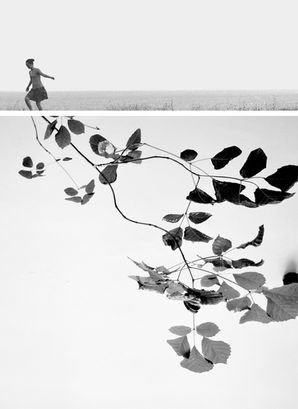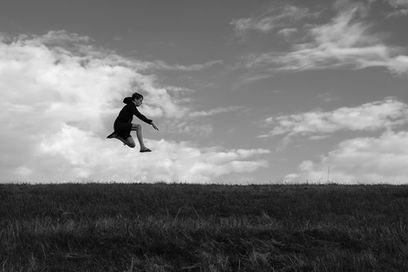
THE ART OF ANALOGUE
July 12, 2024
INTERVIEW
PHOTOGRAPHY Paul Cooklin
INTERVIEW Melanie Meggs
In the contemporary landscape of photography, where the emergence of artificial intelligence is reshaping our perception of imagery and digital platforms are revolutionising the art of visual storytelling, United Kingdom fine art photographer, Paul Cooklin stands as a testament to tradition. Eschewing the allure of modern conveniences, Paul continues to uphold the fundamental principles of photography — capturing light through an aperture, preserving it in layers of silver halide crystals exposed through a gelatinous layer that is fixed and hardened through processing, to achieve enduring imagery.
The tactile experience of processing film or prints in a darkroom is like no other. What’s not to love about a darkroom, along with the dramatic red light, smell of the chemicals, the sound of running water, together with the allure of all the toys you get to play with, like enlargers, easels, timers, thermometers, trays, tongs, can make for a profound experience and one that formed many photographers’ critical and creative thoughts about how to create photography throughout history. It is an art form that has found a breath of life recently with many community darkrooms opening, giving photographers an opportunity to keep analogue alive and carry it into the future.
Paul started his journey as a digital photographer, working multilayered abstracted digital images to conceptualise and define his frames. Often exploration and experimentation lead to new discoveries and create new paths of critically seeing and thinking. Paul found the distinct tonal qualities and grain of the silver hardened crystals inherent in analog film hard to reproduce in digital photography. Soon Paul began exploring old methods to provide a new platform for his visual storytelling. He found mastering silver gelatin printing to be key in how he dictates the narratives of the stories he tells, creating a subversive atmosphere for the viewer to become saturated in the experience. For Paul the extensive and rich history expanding over two centuries, now moving into its third, combined with the infinitive artistic potential it inspires, will continue to entice process driven visual storytellers back into the darkroom.
In an essay about black and white photography, Paul has embraced the removal of colour focusing on the basic elements in photographs he feels can get lost in the saturation of colour. He explores light, shadow, scale, space, texture, and pure geometry in its simplest form without any distraction. This allows him to achieve a depth and clarity in his photography, which he finds special to this medium. Paul plays with contrast to establish emotional connections in his visual stories creating drama and impact, or like a dense fog, he allows for the subtlety of the greyscale to create the nuance. For Paul he tells his visual stories not only through his camera, but much of the narrative is formed in properties and values of analogue film, and the printing processes that nurture and further the narrative creating a powerful statement and connection and understanding of the story.
With a diverse body of work spanning various photographic genres, Paul’s portfolio is as eclectic as it is captivating. His images have graced the pages of prestigious publications such as TIME Magazine and Italian Vogue and have been featured on television. Additionally, he has participated in numerous global exhibitions, further solidifying his imprint on the world of analogue photography.
We have the privilege of gaining insight into the mind of an artist whose work transcends the boundaries of time and medium. From his early days as a digital artist to his current mastery of analogue photography, Paul Cooklin's journey is a testament to his unwavering passion for the craft. Join us as we uncover the inspiration, technique, and vision behind his captivating images.

“Creating digital art was a cathartic and creative experience in that I could literally create anything I wanted from a blank page of pixels. I was self-taught in Photoshop but quickly learnt the basics for what I wanted to create. However, I burnt out quite quickly having had 5 disk publications licensed to then Brand X Pictures (now owned by Getty Images). From this point I began experimenting with the Bronica camera I was gifted by my father and enjoyed the new challenges this gave me.”
IN CONVERSATION WITH PAUL COOKLIN
THE PICTORIAL LIST: Can you describe a particular moment or experience that sparked your passion for photography?
PAUL COOKLIN: I was given a Bronica ETRS medium format film camera by my father who was an amateur photographer when he was younger. By ‘amateur’, I only mean it wasn’t his profession - he was a very good darkroom printer. I bought some film and began experimenting. The first few snaps I got back were not of good quality in any way, but they had a look about them which I really liked. This was really the moment I was hooked on photography, solely analogue film photography.
TPL: What do you find most rewarding about working with analogue film and traditional printing methods? Can you describe the feeling you get when you see your images in silver gelatin print for the first time?
PAUL: I like the tonal qualities of silver gelatin prints - to my eyes they just have an intrinsic magic about them. Digital photography can look ‘too clean and sharp’.
TPL: What role do you think analogue photography plays in today's predominantly digital world?
PAUL: There’s room for both. Digital capture is highly suited to commercial photography as the camera can be tethered to a laptop for an instant visual of the shot, perhaps in a similar way a Polaroid was used. I think a lot of fine art photographers still use analogue mediums for their work as it has a different look. The overall process is entirely different. I see all the different ways to capture an image and the choices in a similar way to perhaps an artist who has the option to use oil, acrylic or water colour along with a variety of brushes, pallet knives, canvas substrates etc. Each will give a different look and feel depending on what the artist wishes to express.
TPL: Do you have a favorite camera or piece of equipment that you prefer to work with?
PAUL: I'm a big fan of Leica. I've owned the M6 and M7. The M6 was stolen in France, and I sold the M7 for poverty reasons. I now use a second world war Leica II (Barnack) with an equally old 50mm lens and a Leica R4 with a 28-70mm lens. I've recently sold everything else. I may well buy a Hasselbald 500cm at some point and/or another M6 or M7 as they’re simply lovely tools to use.
I like the tonal qualities of silver gelatin prints - to my eyes they just have an intrinsic magic about them.

TPL: Your work has been featured in prestigious publications such as TIME Magazine and Italian Vogue. How did you feel when you first saw your work in print?
PAUL: It’s a nice feeling to see my work online and in print.
TPL: Are there any photographers or artists who you admire? If so, who are they and how have they inspired you?
PAUL: Henri Cartier-Bresson is my favorite photographer of the 20th century. His ability to capture ‘the decisive moment’ was masterful and is well documented.
TPL: If you could just choose one photographer to shoot alongside for a day...who would you choose? And why?
PAUL: Henri Cartier-Bresson for the reasons above.
TPL: What have been some of your favorite places you find inspiration to explore through your photography, and what draws you there?
PAUL: I very much enjoy the French countryside. That said, we try to visit at least one city in Europe each year. To date, all have had something to offer.
TPL: How do you stay inspired and motivated in your artistic practice?
PAUL: It can be quite frustrating sometimes staying focused but I find that travel is very good for inspiration and helps blow away the cobwebs.
TPL: What are your hopes and aspirations for the future of your photography career?
PAUL: To travel and sell more prints of the places and cultures I've visited.

In an era dominated by pixels and instant gratification, Paul Cooklin’s dedication to analogue photography is a breath of fresh air. His transition from digital to analogue reveals a deep commitment to craft and tradition. The tactile, hands-on darkroom experience, combined with the unique aesthetic of silver gelatin prints, forges a profound, almost spiritual connection to his art.
Paul's work transcends mere imagery, evolving into narratives rich with texture and emotion. His meticulous process and mastery of light and shadow elevate his photography to a masterful storytelling medium. Amidst the prevalence of digital techniques, Paul's unwavering preference for analogue underscores the distinctive qualities of traditional methods, imbuing his creations with nostalgia and authenticity. From the serene beauty of the French countryside to the vibrant pulse of European cityscapes, his images possess a timeless allure that captivates and mesmerises.
Paul Cooklin’s journey celebrates the enduring power of analogue photography, a testament to the magic that emerges when light, chemistry, and vision converge. His work not only preserves the rich heritage of traditional photography but also redefines it for future generations, ensuring the art of film photography remains vibrant and relevant in this digital age.






































